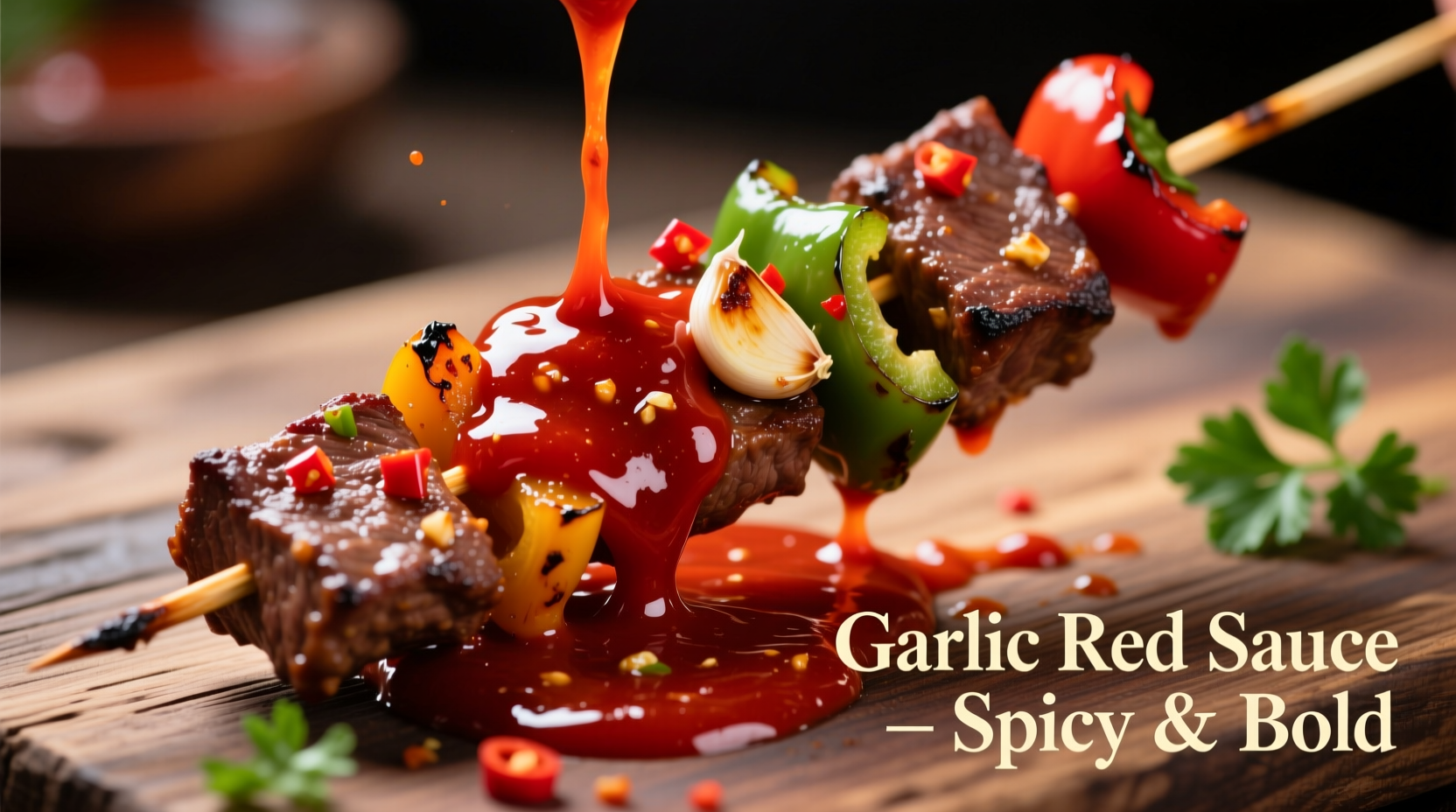Discover how to transform ordinary meals into extraordinary culinary experiences with one of the most versatile sauces in Mediterranean cooking. Whether you're a beginner cook or an experienced chef, mastering garlic red sauce will elevate your weeknight dinners and impress guests with minimal effort. This guide reveals professional techniques for perfect texture, balanced flavor, and authentic results every time.
The Evolution of Garlic Red Sauce: From Humble Origins to Culinary Staple
Garlic red sauce traces its roots to 18th century Italy when tomatoes were first incorporated into Mediterranean cuisine. Initially met with suspicion, tomatoes gradually became central to Italian cooking, particularly in southern regions where garlic had long been a staple flavoring. The combination created what we now recognize as the foundation of modern Italian-American cuisine.
| Historical Period | Key Developments | Regional Variations |
|---|---|---|
| 1700s | Tomatoes introduced from Americas; initially considered ornamental | Regional resistance to tomatoes in northern Italy |
| 1800s | Garlic-tomato combinations emerge in southern Italy | Sicilian versions feature more garlic; Neapolitan versions emphasize tomatoes |
| Early 1900s | Immigration spreads recipe to America | Italian-American versions become thicker with added herbs |
| Present Day | Global popularity with countless variations | California versions often include fresh basil; restaurant versions feature premium ingredients |
Essential Ingredients for Authentic Garlic Red Sauce
The magic of garlic red sauce lies in its simplicity. Unlike complex sauces requiring numerous ingredients, this classic preparation shines through quality components and proper technique. Understanding what makes each element crucial separates adequate sauces from exceptional ones.
Tomato Selection Guide
Not all tomatoes create equal results. For authentic flavor, choose San Marzano tomatoes (DOP certified when possible) which offer the perfect balance of sweetness and acidity. According to the University of California Agriculture and Natural Resources, San Marzano varieties contain 20% less acidity than standard plum tomatoes, creating a naturally smoother sauce without added sugar (UC ANR Tomato Research).
Garlic Preparation Techniques
How you prepare garlic dramatically impacts your sauce's final flavor profile. Professional chefs recommend:
- Slicing for subtle, evenly distributed flavor
- Minced for more pronounced garlic presence
- Whole cloves for gentle infusion without sharpness
Adding garlic to cold oil before heating prevents bitterness while maximizing flavor extraction—a technique documented in culinary research at the Culinary Institute of America (CIA Flavor Development Studies).

Step-by-Step Preparation: Crafting Perfect Garlic Red Sauce
Follow this professional method to create restaurant-quality garlic red sauce at home. The process takes just 30 minutes with minimal active preparation time.
Traditional Method
- Heat 1/4 cup extra virgin olive oil over medium-low heat
- Add 4-6 garlic cloves (sliced or whole)
- Sauté until fragrant but not browned (2-3 minutes)
- Add 28 oz crushed San Marzano tomatoes
- Season with salt, red pepper flakes, and fresh basil
- Simmer uncovered for 20-25 minutes
- Stir in 2 tbsp fresh parsley before serving
Avoiding Common Mistakes
Many home cooks encounter issues with their garlic red sauce due to these preventable errors:
- Overheating garlic - causes bitterness (keep oil temperature below 300°F)
- Adding ingredients in wrong order - tomatoes should hit the pan after garlic is fragrant
- Over-simmering - reduces freshness (25 minutes maximum for fresh tomato versions)
- Using dried basil instead of fresh - changes flavor profile significantly
Perfect Pairing Guide: Maximizing Your Garlic Red Sauce
Understanding which foods complement garlic red sauce transforms good meals into exceptional dining experiences. This sauce's versatility extends far beyond basic pasta applications.
Pasta Pairing Principles
Match sauce texture to pasta shape for optimal results:
- Smooth sauces (well-strained) work best with long, thin pastas like spaghetti
- Chunky sauces adhere better to ridged pastas like rigatoni
- Thicker sauces fill tube pastas like penne
Culinary Applications Beyond Pasta
Expand your cooking repertoire with these professional applications:
- Protein base - simmer chicken breasts directly in sauce for infused flavor
- Pizza foundation - use as base for homemade pizza (thinly spread)
- Vegetable enhancer - toss roasted vegetables for added moisture and flavor
- Breakfast application - top shakshuka or scrambled eggs
- Soup base - create quick minestrone or vegetable soup
Storage and Usage Tips for Maximum Freshness
Proper storage techniques preserve your garlic red sauce's vibrant flavor and extend its culinary usefulness.
Refrigeration Guidelines
Store in airtight container for up to 5 days. The USDA Food Safety and Inspection Service recommends cooling sauces rapidly before refrigeration to prevent bacterial growth (USDA Food Safety Guidelines).
Freezing Techniques
For longer storage:
- Portion into ice cube trays for single-serving portions
- Once frozen, transfer cubes to labeled freezer bags
- Store up to 6 months without quality degradation
- Thaw overnight in refrigerator before use
Creative Reuse Ideas
Transform leftover sauce into new culinary creations:
- Mix with mayonnaise for sandwich spread
- Stir into scrambled eggs for quick shakshuka
- Use as pizza dipping sauce
- Add to meatloaf mixture for moisture and flavor
- Thin with broth for quick soup base











 浙公网安备
33010002000092号
浙公网安备
33010002000092号 浙B2-20120091-4
浙B2-20120091-4